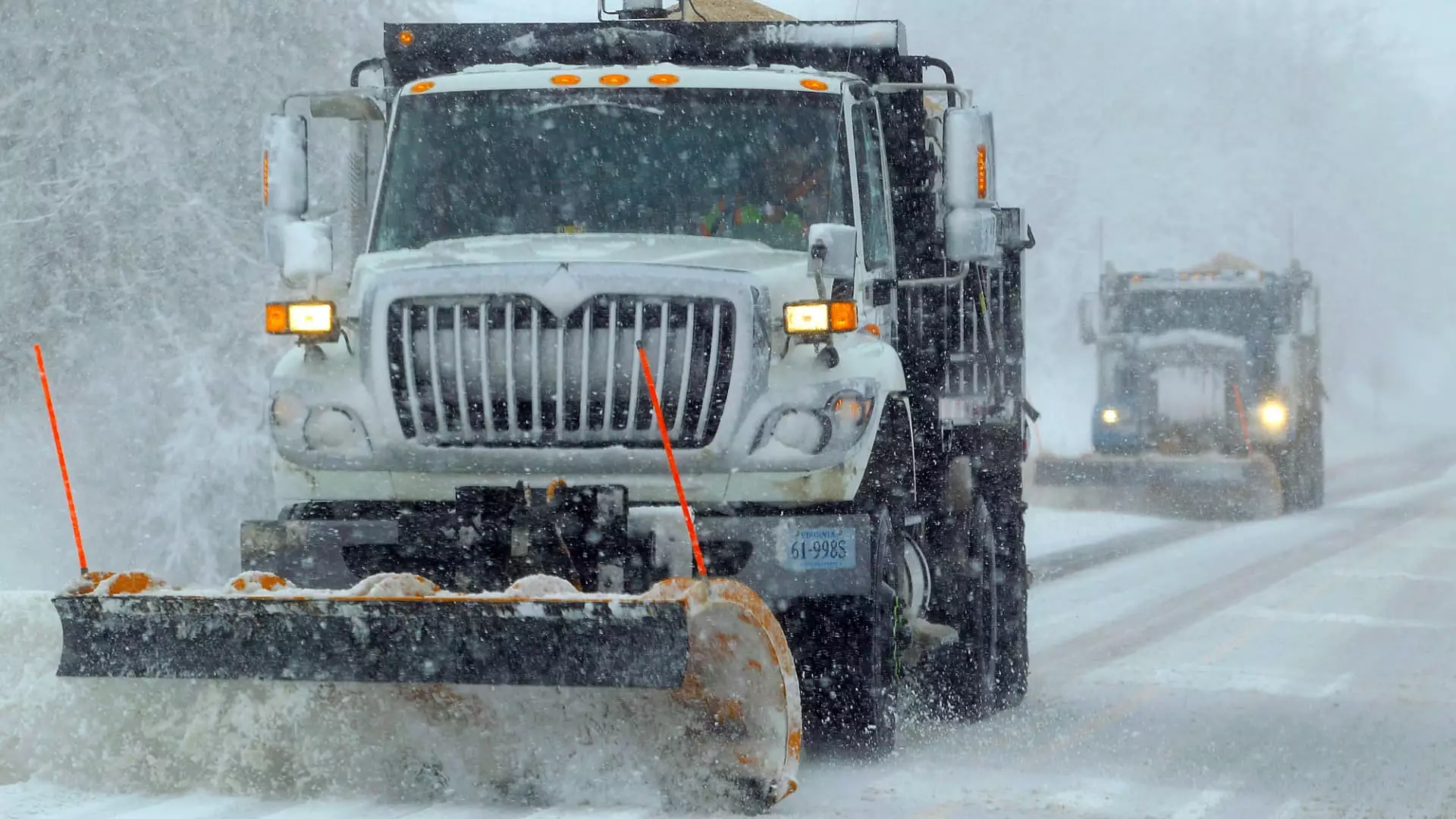As tens of millions of Americans prepared for an impending winter storm over the weekend, a palpable sense of urgency permeated through several regions. Predictions from the National Weather Service have indicated a potential for the heaviest snowfall and the coldest temperatures observed in more than a decade. With states like Arkansas, Missouri, and Virginia declaring states of emergency, the looming polar vortex loomed large over the central and eastern United States, wreaking havoc across various states as it made its course eastward.
The phenomenon known as the polar vortex—a swirling mass of cold air that generally maintains its position around the polar regions—has recently experienced a disruption. This has led to a significant southward shift, resulting in extremely low temperatures accompanying heavy snow in the Midwest and parts of the South. With forecasts projecting severe conditions, emergency responders prepared for the worst as communities braced to tackle the brunt of the winter storm.
More than 60 million people across a staggering 30 states found themselves under weather alerts as the storm developed into a significant low-pressure system, threatening both heavy snowfall and ice accumulation over the next few days. Airports were affected; Kansas City International Airport, for example, briefly suspended operations as crews scrambled to clear snow-laden runways. The ensuing delays cascaded across the nation, which is especially concerning for travelers amidst the ongoing holiday season.
In a particularly alarming turn of events, the Interstate 70 corridor in Kansas faced significant closures due to blizzard conditions that threatened to bury the region under up to 14 inches of snow coupled with aggressive wind gaps reaching 40 mph. This led to dire warnings surrounding travel safety, with the National Weather Service cautioning that driving conditions could become perilous or even impossible due to “dangerous or impossible” road conditions.
In anticipation of this storm, major cities such as Cincinnati, Chicago, and St. Louis initiated pre-emptive measures to treat roadways, while also establishing warming centers for those stranded amid the storm’s reach. The sheer scale of the impact was broadcast in real time through blizzard warnings covering substantial portions of Kansas and Missouri, indicating imminent reduced visibility and relentless winds—the very hallmarks of a severe winter event.
Meanwhile, as the storm’s fierce grip advanced towards the eastern seaboard, much of the southern United States found itself in a precarious situation. In cities like Jackson, Mississippi, and Baton Rouge, Louisiana, residents were warned of the risk of severe thunderstorms—compounded by the rare occurrence of tornadoes, damaging wind, and hail. This fluctuation in weather kept millions on alert as the nation braced itself for a dual threat of extreme cold and severe storms.
As forecasts indicated that snow would commence in the mid-Atlantic and central Appalachians, it became evident that the entire eastern corridor of the United States would confront challenging weather conditions. Major urban centers cities including Washington, D.C., Baltimore, and Philadelphia prepared for substantial snowfall, prompting local authorities to garb prepared for snow accumulation ranging from 5 to 12 inches.
The logistical consequences of these weather disruptions were glaringly evident as nearly 7,000 flights experienced delays across the country due to inclement weather. Denver International Airport even topped the charts for delays, with an alarming percentage of flights taking off later than scheduled. Airlines responded by waiving change fees in anticipation of the storm’s disruptive potential, amidst health and safety concerns for travelers.
Moreover, following the storm’s passage, forecasts projected a chilling decline in temperatures, with highs plummeting 10 to 25 degrees below normal across the eastern two-thirds of the country. In some regions, the situation was dire—as overnight lows dipped to profound depths, reaching -20 degrees in parts of northern Plains states and substantial wind chills reducing real-feel temperatures to a freezing -40 degrees.
The upcoming winter storm serves as a somber reminder of nature’s relentless power. As millions of Americans navigate the potentially life-altering impacts of this hazardous weather, images of communities banding together, local governments armed with contingency plans, and hopeful resilience in the face of adversity emerge. The storm will inevitably reveal not just the vulnerabilities of given regions, but also present opportunities for collaboration as emergencies unfold in real-time. With such daunting circumstances approaching, the priorities remain clear: safety, preparedness, and the enduring spirit of togetherness that binds communities in challenging times.


Leave a Reply